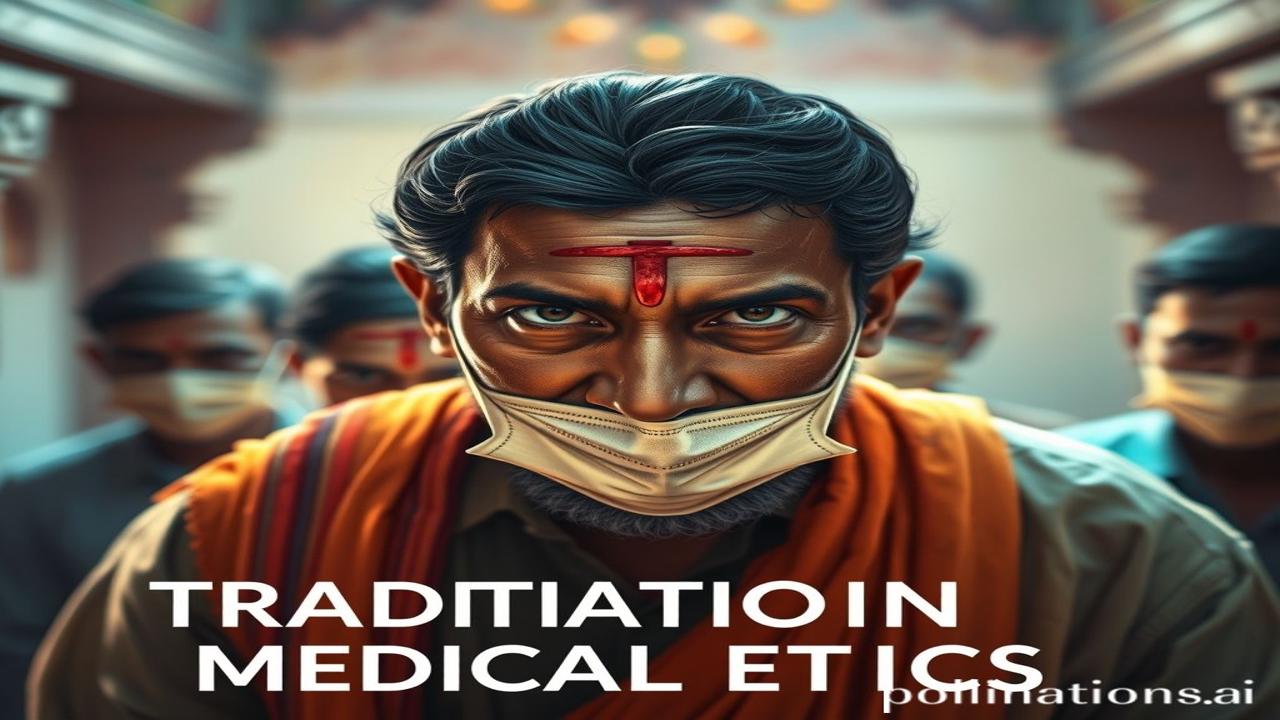Vaidyashala Ki Galiyon Mein: Unraveling Ancient Medical Ethics
Kabhi socha hai, uss zamane mein jab doctors ke paas stethoscope nahi the, jab hospitals mein MRI machines nahi the, tab ilaaj kaise hota tha? Aur ilaaj se zyada, ilaaj ke dauran kya sahi aur kya galat tha, yeh kaise tay hota tha? Chaliye, waqt ki nadi mein thoda doobki lagate hain aur khojte hain hamari traditional medical ethics ki kahani.
A History Etched in Herbs and Honour: The Roots of Medical Ethics
Traditional medical ethics, meri jaan, koi aisi cheez nahi hai jo kal raat banayi gayi. Its roots run deep, deeper than the Ganges itself, stretching back to ancient India’s Ayurvedic and Siddha systems. Yeh woh daur tha jab vaidyas aur hakims sirf doctor nahi hote the; woh toh guru the, guide the, aur insaniyat ki ek living embodiment the.
We are talking about the Charaka Samhita (2nd century BCE – 2nd century CE) and the Sushruta Samhita (around the same time, maybe even a bit earlier!), our treasure troves of medical knowledge. They didn’t just teach about herbs and surgery; they laid down a code of conduct, a set of principles for every medical practitioner. Think of it as the original Hippocratic Oath, but with a desi twist!
Yeh dhrohar important isiliye hai kyunki it highlights a fundamental truth: medical care is not just about science; it’s about morality, compassion, and a deep respect for human life. Yeh ek reminder hai ki technology kitni bhi advance ho jaaye, insaniyat ko nahi bhoolna chahiye.
Life in the Vaidyashala: The Vaidya, the Patient, and the Sacred Trust
Imagine a small vaidyashala (clinic) tucked away in a bustling ancient city. Dhyaan se suniye: The air smells of haldi, tulsi, and neem. The walls are adorned with intricate carvings of medicinal plants. And in the center sits Vaidya Ramdas, a wise man with kind eyes and a gentle smile.
Ma Rukmini, a young woman, enters the vaidyashala with worry etched on her face. Her child is sick. Vaidya Ramdas examines the child, listens patiently to Rukmini’s concerns, and assures her, “Chinta mat karo, Ma. Sab theek ho jayega. Main apna pura prayas karunga.”
He doesn’t just prescribe medicine; he offers comfort, understanding, and hope. He emphasizes swasthya (holistic well-being), not just the absence of disease. And crucially, he keeps Rukmini’s illness private – patient confidentiality was a big deal, even back then!
This scene embodies the core of traditional medical ethics:
- Duty to care: The vaidya is obligated to heal, irrespective of the patient’s caste, creed, or social status.
- Non-maleficence: “First, do no harm” – a guiding principle echoed in ancient texts.
- Beneficence: Always act in the patient’s best interest.
- Veracity: Be truthful with the patient about their condition and treatment options.
Echoes of the Past: Medical Ethics in Modern India
Aajkal, doctors ke chambers mein computers aur sophisticated equipment hote hain. Lekin uss zamane ki shiksha ab bhi hamare saath hai. Doctors still swear oaths to uphold ethical standards, medical colleges teach ethics courses, and the principles of compassion and patient-centered care remain central to the profession.
You see it in the way doctors often go the extra mile to help their patients, even in resource-constrained settings. You see it in the emphasis on preventative care and holistic well-being, principles deeply rooted in Ayurveda. Yeh Bharatiyata ka hissa hai, ek aisa ehsaas ki hum sab ek dusre se jude hue hain, aur ek dusre ki care karna hamara dharma hai.
Myth-Buster: Ayurveda is Just Grandma’s Remedy?
Log samajhte hain ki Ayurveda sirf dadi maa ke nuskhe hain, but asli sach yeh hai ki it’s a highly sophisticated medical system with its own pharmacology, surgery, and diagnostic techniques. It’s also backed by centuries of clinical observation and, increasingly, modern scientific research.
Sensory Symphony: The Healer’s Touch
Imagine: The gentle scraping sound of a shilpattar (grinding stone) as a vaidya prepares a herbal remedy. The aroma of guggul burning during a healing ritual. The feeling of cool sandalwood paste applied to a feverish brow. The soothing sound of chants during a massage. These sensory experiences were integral to the healing process, creating an atmosphere of trust and well-being.
The Vaidya’s Promise: A Legacy of Compassion
“Aturo nrigrahitavyo vipranam sukritam mahat/ Praaninam paramaashraya”
(Translation: “One should take care of the sick with great care, for the welfare of all living beings is the greatest good.”)
This ancient Sanskrit verse encapsulates the essence of traditional medical ethics: to serve humanity with compassion, integrity, and a deep respect for life. Yeh seva ka path, tyaag ka marg, aur dharma ka adhyayan hai. Aur yeh path aaj bhi, har doctor ko inspire karta hai. Sochkar dekhiye.
